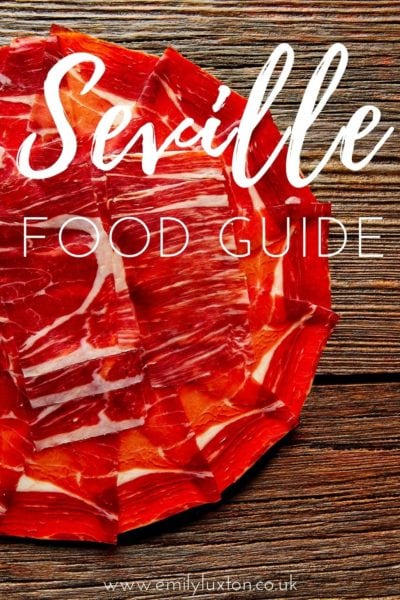Some posts on this site contain affiliate links. If you book or buy something through these links, I earn a small commission (at no extra cost to you). Take a look at my privacy policy for more information.
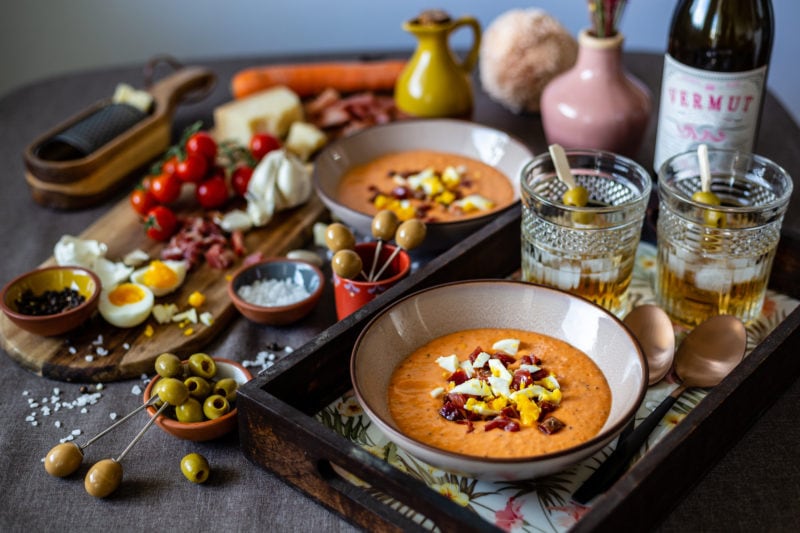
My Seville food guide: every dish you need to try when you visit the Andalucian capital…
Food is always one of the best parts of a trip – ESPECIALLY in Spain – and Seville is no exception! On my first trip to the city, I made it my mission to eat as much food as possible – and I did a pretty good job!
Before the trip, I did tons (and I mean tons) of research, making a shortlist of all the must-try food and best restaurants in the city. I didn’t want all that hard work to go to waste, so I thought I might as well turn it into a blog post. This way, all those calories I consumed are worth something! Here’s my guide to everything you need to try on your first trip to Seville – I hope you’re hungry…
Seville Food Tours
I highly recommend taking a food tour on your first day or evening in Seville. It’s a great way to get an overview of the city and try some of the main dishes. You can also take the opportunity to ask your guide for some recommendations for the rest of your trip – both for dishes to try, and great restaurants.
There are loads of food tours in Seville to choose from. I booked this 3-hour evening Tapas Crawl through Get Your Guide (from £55.42pp) because it had some great reviews. I loved it! The tour was great, our guide Angela was amazing, and I ate and drank a lot! Highly recommend. There are some more options below:
Flavours of Andalucía Guided Food Tour with Tastings – from £26pp
Tapas, Taverns and History Guided Walking Tour – from £73pp
3.5-Hour Spanish Cooking Class & Triana Market Tour – from £60pp
Spanish Cooking Class with Dinner – from £56pp
Flamenco Show with Andalucian Dinner – from £60pp
16 Foods and Dishes to Try in Seville
Jamón Ibérico (from Huelva)
One thing you absolutely HAVE to try in Seville – in fact, in Spain in general – is Jamón Ibérico. Specifically, Jamón Ibérico de Bellota (from acorn-fed Iberico pigs).
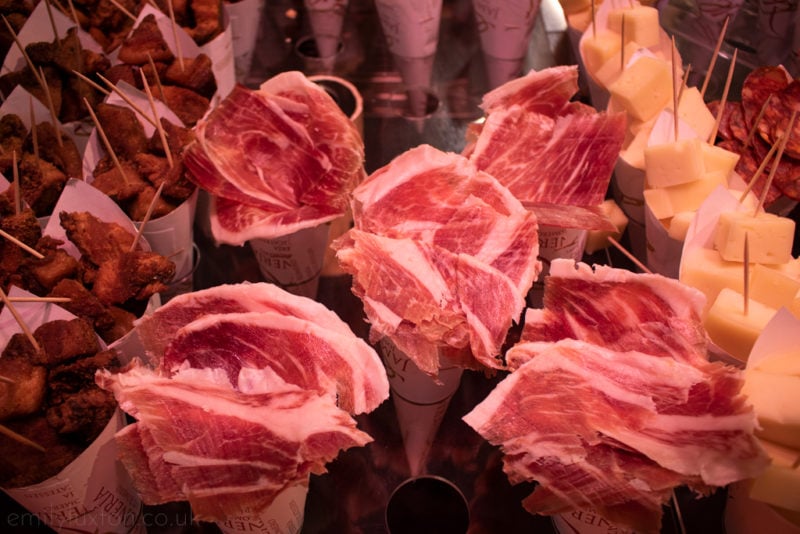
Seville is just a short drive from the Andalucian province of Huelva, one of just four areas that produce true Ibérico ham. Jamón Ibérico de Bellota from Helva is known as one of the most flavourful in the country, so it’s a must-try in Seville!
Where to Try: at Seville’s markets! I loved Jamoneria Jose Luis Romero in Triana Market, just across the river from the city centre. You can also take a day trip to Aracena from Seville to get an in-depth look at the artisanal ham-making process there.
Salmorejo
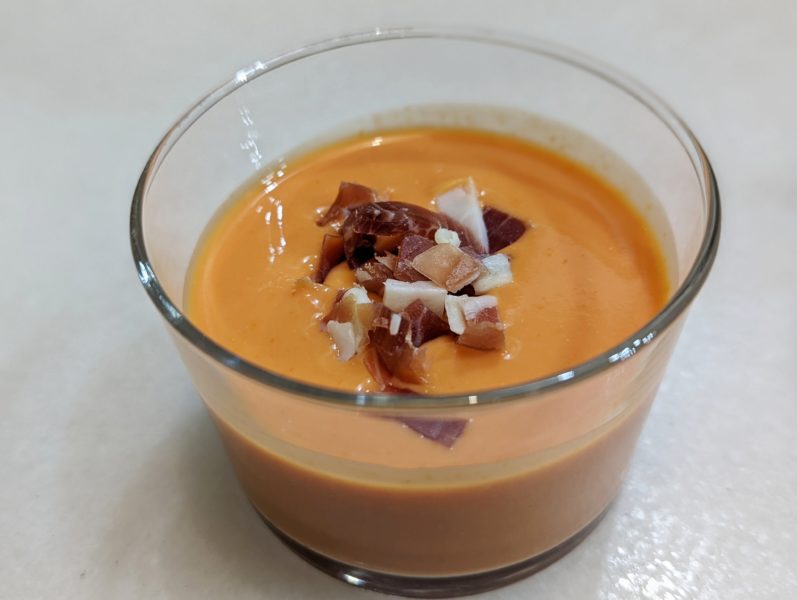
If you’re familiar with Spanish food, you may well have tried gazpacho before. The traditional Andalucian dish Salmorejo is similar to gazpacho, in that it’s also a cold tomato soup. But this Andalucian speciality is quite a bit thicker and creamier.
Salmorejo is made using tomatoes, garlic, and bread crumbs. This last ingredient may sound unusual, but apparently, quite a few traditional dishes in Andalucia are beefed up using bread. It originated as a cost-effective way of thickening soups and stews using stale bread.
This tasty cold soup is usually topped with jamón, and sometimes slices of boiled egg – although you can ask for a vegan/vegetarian option if you prefer.
Montadito de Pringá
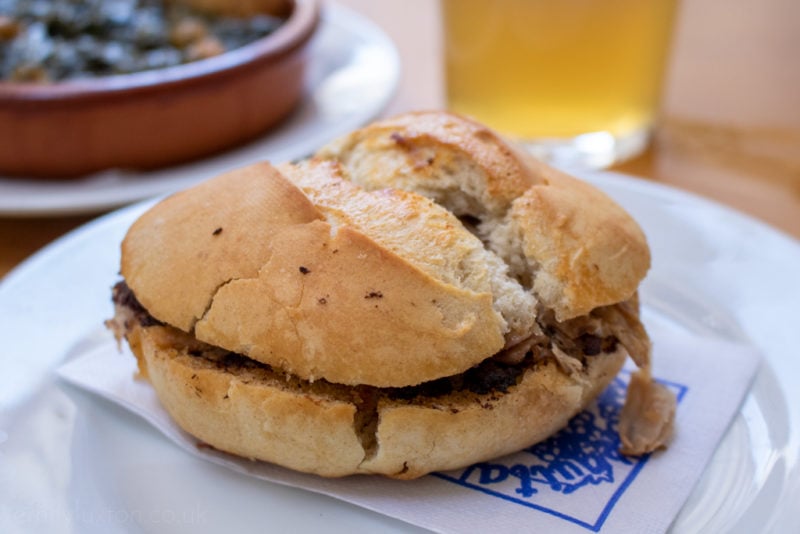
A montadito is a kind of small, tapas-sized sandwich made using a crusty roll or small baguette. And pringá is a very typical Andalucian dish made from slow-cooked pork, chorizo, fat and morcilla (blood sausage, similar to black pudding). It’s a deliciously soft, juicy filling for a hot sandwich – and a must-try in Seville!
Where to Try: You can find montaditos de pringá all over Seville. I recommend Bodeguita Romero (10 Calle Harinas) or the Taberna Peregil (12-14 Plaza Padre Jerónimo de Córdoba).
Andalucian Cheeses
When in Seville, you need to try the wide variety of traditional Andalucian cheeses. There are plenty to choose from! Andalucia is the main region in Spain for goat’s milk production, so goat cheese is the main variety. One of the most popular ones is Payoyo Cheese, so keep an eye out for that.
Espinacas con Garbanzos
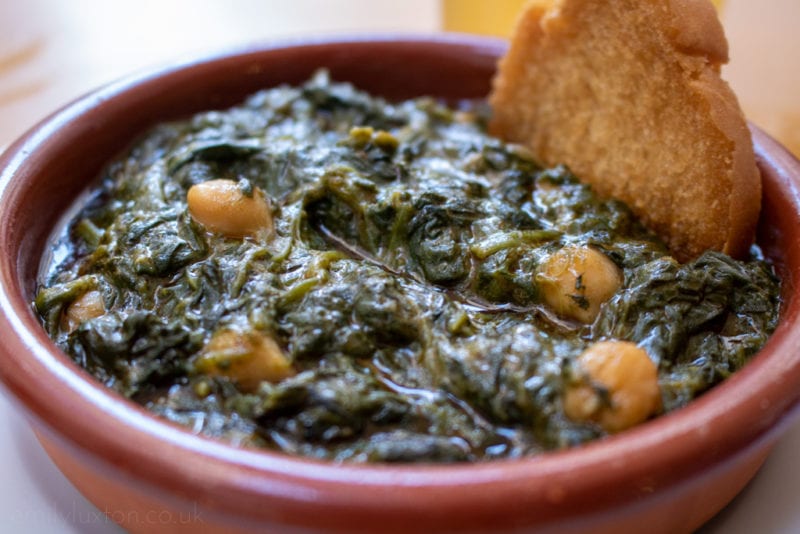
Espinacas con Garbanzos, spinach with chickpeas, is a super traditional meal in Seville. They’re usually served as a tapas dish, but you could also order them as a side if you want some extra veggies!
Presa Ibérica
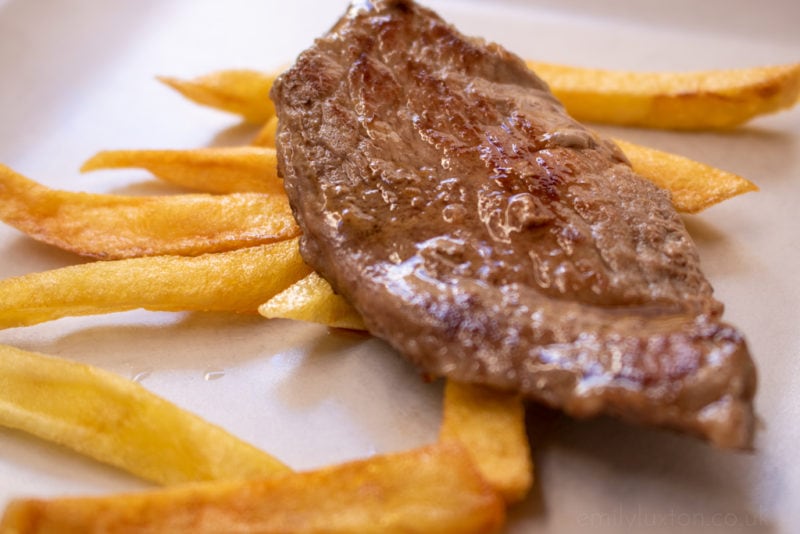
Iberico pork isn’t just about ham! Presa Ibérica is pork shoulder, and it’s considered one of the best cuts of meat. Generally, it’s served grilled (a la plancha), perhaps with a few papas fritas (French fries). It’s often served as a tapa, but a larger version can also be ordered as a main.
Cazón en adobo
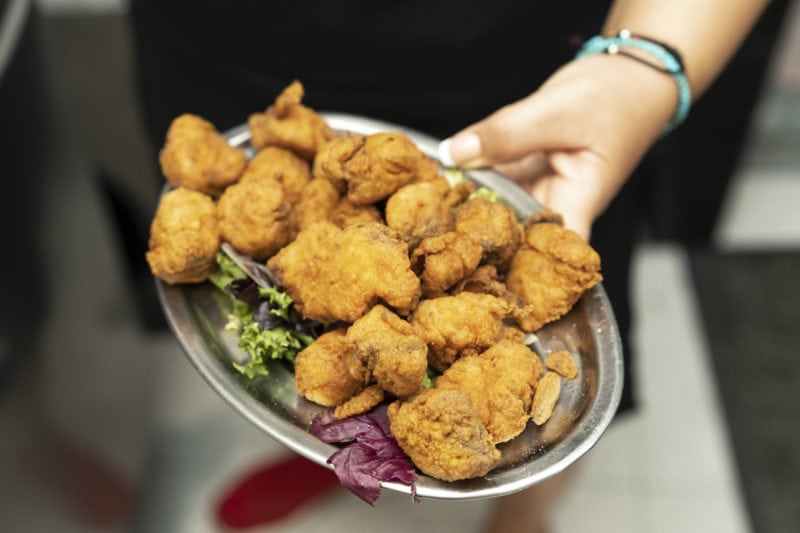
Cazón = dogfish, also known as sand shark. Originating from Cadiz, cazón en adobo is a very typical food throughout Andalucia. Small chunks of this tender white fish are marinated in a mix of spices which hint at the region’s Moorish history, then deep-fried.
Where to Try: I got mine from Freiduría Cervecería Monte-Sión (22 Feria) and loved it! It’s a small, super local fish bar with a hatch for takeout.
Solomillo al Whisky
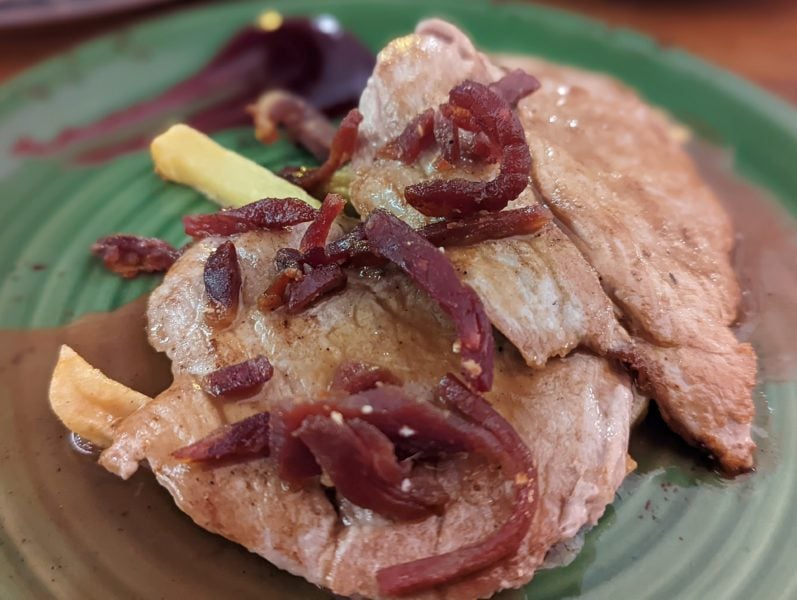
Solomillo al Whisky is pork in a whisky sauce, a simple dish that packs a lot of flavour. The sauce is made with whisky, lemon, and garlic, served over browned pork loin – usually with fried potatoes or chips.
Where to Try: For a modern take on this classic Sevillano dish, try La Malvaloca (20 Plaza de la Encarnación), where you can sit outside with a view of the iconic Las Setas.
Albondigas de chocos
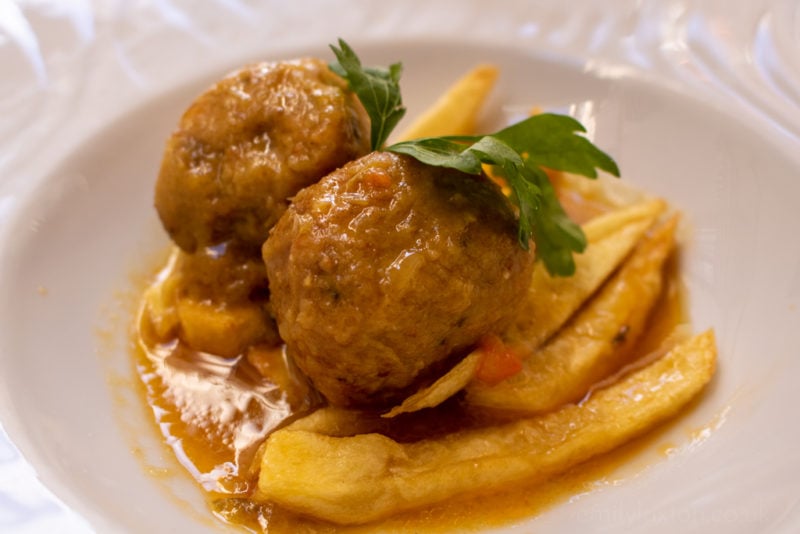
Another Andalucian food you have to try is albóndigas de choco, or cuttlefish meatballs. Originating on the Costa de la Luz, these deliciously fishy meatballs are a popular tapa throughout the region – especially in Seville.
Chicharrónes
You’ve probably already worked out that pork is a pretty big part of the diet in Seville! Chicharrónes are YET another pork dish.
In fact, chicharrónes generally means any kind of pork fat dish. But the ones to look out for are pieces of fatty pork belly, which might be slow-roasted and served cold in slices, or fried and served hot in chunks. Either way, they’re delicious!
Rabo de Toro
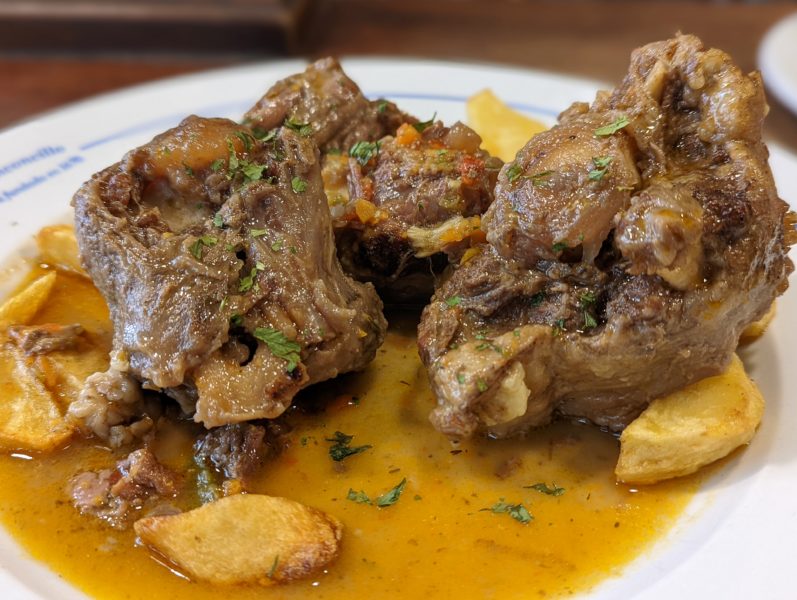
Rabo de toro, aka cola de toro, is bull’s tail. Whether you agree with it or not, Seville has a long tradition of bullfighting, and it’s left its mark on the local cuisine. Rabo de toro is a hearty dish of slow-cooked stewed bulls tail, usually served with a big portion of french fries.
Be warned, the tail is a surprisingly big cut of meat. I couldn’t finish mine! I recommend splitting this dish with someone else, as it can be quite filling.
Where to Try: El Rinconcillo (40 Calle Gerona), the oldest bar in Seville and something of an institution. The rabo de toro, when it’s on the menu, is one of their specialities.
Breakfast in Seville
Tostadas con Tomate
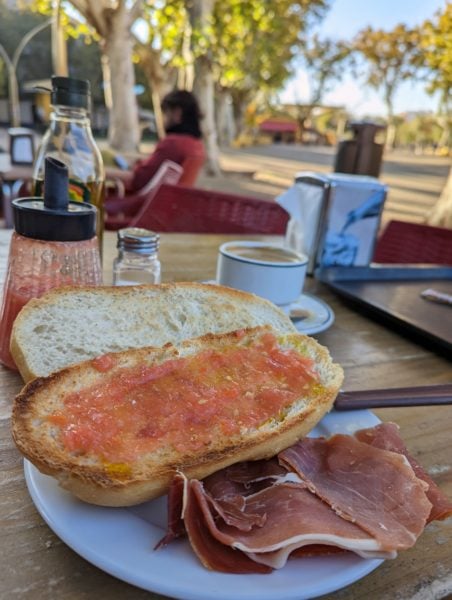
The most typical breakfast in Seville is the simple tostada. Tostada literally means toast, but these are generally slices of lightly toasted baguette. It’s most commonly served with garlic, olive oil, and tomato – and you can also add serrano ham if you fancy it.
You might have tried pan con tomate elsewhere in Spain, usually made by rubbing a piece of tomato into the bread. In Seville, they serve the tostadas with a big helping of pureed tomato flesh instead for a really delicious, fresh taste!
Where to Try: You can find tostadas at almost every cafe in Seville. I loved the ones at Cafe Piola (55 Alameda de Hércules), order at the bar and grab a seat outside on the Alameda de Hercules plaza to watch the world go by. I paid 3.40 for two slices and a coffee.
Churros con Chocolate
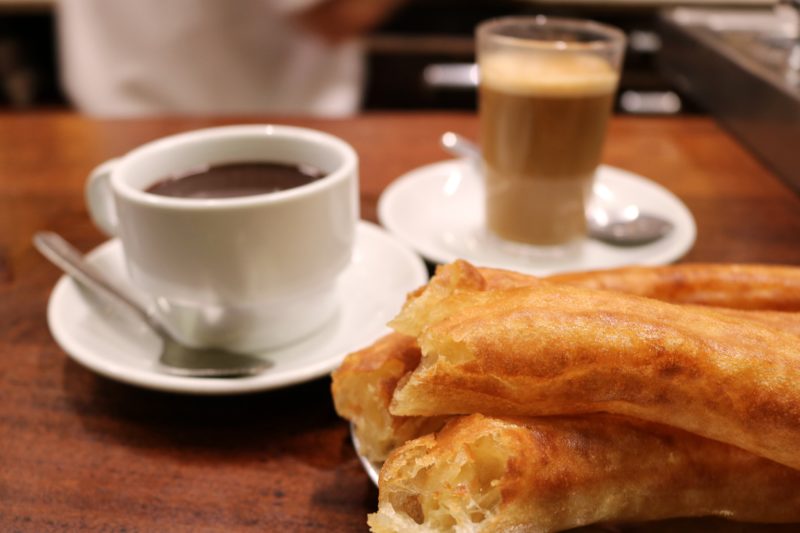
If you have a sweet tooth like me, the best breakfast in Spain is churros con chocolate. Churros are sticks of deep-fried sweet batter, served with a pot of thick hot chocolate for dunking. It’s a pretty typical breakfast across Spain, and Seville is no exception.
Where to Try: Bar El Comercio (9 Calle Lineros). Most sources agree these are the best churros in Seville – in fact, they’re probably the best churros I’ve ever had!
Drinks to try in Seville
Orange Wine
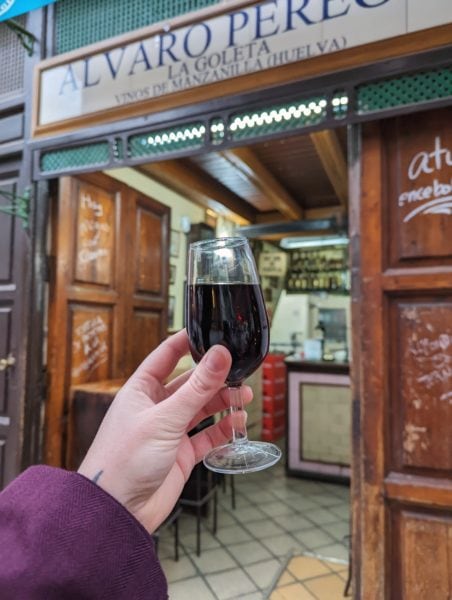
If you only try one new drink in Seville, make sure it’s orange wine (vino de naranja). It’s a sweet fortified wine made using the peel of Seville’s iconic bitter oranges. It’s more of a dessert wine, but it’s also perfect when paired with some local cured cheeses.
Where to Try: The most famous one comes from Taberna Alvaro Peregil (22 Calle Mateos Gago) – a tiny little bar in the Old Centre named after the owner, a famous local singer.
Sherry
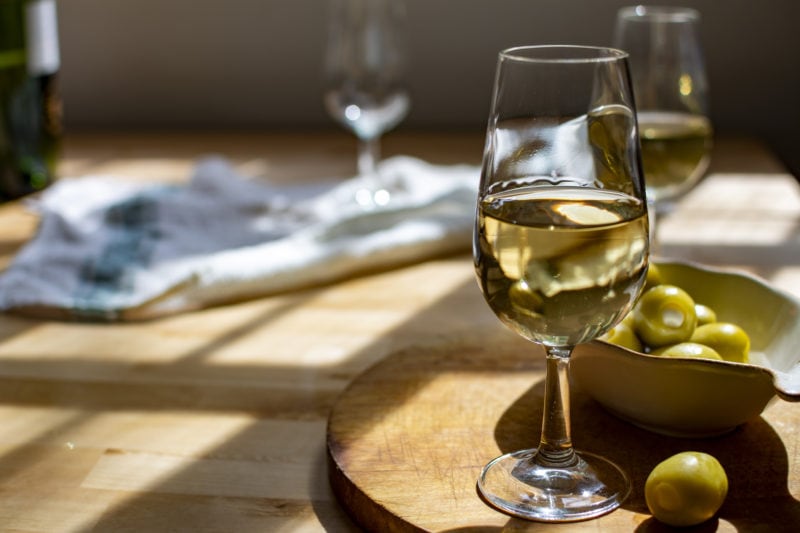
Did you know sherry comes from Andalucia? If it didn’t come from the “sherry triangle” just outside Seville, it isn’t sherry! There are lots of different sherry wines to try while you’re visiting Seville. Among the most popular are Mazanilla, Fino, and Amatiago.
Recommended Tour: Wine and Sherry Day Tour from Seville (from £194.97pp)
Vermouth
Although originally from Italy, vermouth has become an intrinsic part of Spanish culture. It even has its own time of day: la hora del vermut (vermouth hour). Spanish red vermouths tend to be sweeter. They’re usually served on the rocks with a single olive and an orange slice.
There are a few Andalucian vermouths to look out for while you’re in Seville, including Lustau Vermut Rojo and La Copa Rojo from Bodega González Byass.
Seville Food Guide: The Quick Version
The quick list below should get you started if you’re in a hurry, but don’t skip the guide above! It contains extra info and background about each dish – plus recommendations for the best places to try them!
- Jamón Ibérico – cured meat
- Salmorejo – cold soup
- Montadito de Pringá – pork sandwich
- Andalucian Cheeses – see above for recommendations
- Espinacas con Garbanzos – spinach with chickpeas
- Presa Ibérica – pork shoulder fillet
- Cazón en adobo – dogfish, battered and deep-fried
- Solomillo al Whisky – pork in a whisky sauce
- Albondigas de chocos – cuttlefish meatballs
- Chicharrónes – fried pork fat or belly rinds
- Rabo de Toro – bull’s tail
- Tostadas con Tomate – toast with tomato paste (breakfast dish)
- Churros con Chocolate – super sweet breakfast dish
- Orange Wine
- Sherry
- Vermouth
Hope you enjoyed my Seville food guide! Are there any drinks or dishes you tried there that I’ve missed from the list? Share in the comments!
More in and Around Seville
How to Spend 2 Days in Barcelona
